12 Minnesota Native Plants For Your Home Landscapes


Are you looking for plants that are native to the state of Minnesota? We explain what it means to be a Minnesota native plant and share a short list of some examples to get you started!
Minnesota is home to many marvelous things, including an impressive array of native plants. As a homeowner or property manager, there a many advantages to using native plants if you have the opportunity to introduce them to your outdoor spaces. Whether this is your first time considering native plants, or the latest stop in your journey, hopefully this list of 12 native plants below will inspire some new ideas for your MN native landscape. But first...
What are Native Plants?

We consider plants to be native if they have grown and evolved in the same region for thousands of years. This means that the native species of plants with which we interact in Minnesota today are the descendants of species that were supporting Minnesota's ecosystems long before any of us were thinking about what to do with our yards. Over many centuries, these species have become especially well-adapted to thrive in Minnesota's climate and soils, while providing essential habitat for wildlife. They also happen to be amazing additions to your garden or home landscape: they are generally resistant to local pests and suffer few disease problems, are generally drought tolerant (meaning less watering), require no fertilizer and are low maintenance. Finding the right native plants for your landscape will improve the look and ecological value of your property while providing you with the satisfaction of knowing you're doing something powerfully positive for the planet.

Why are Native Plants Important?
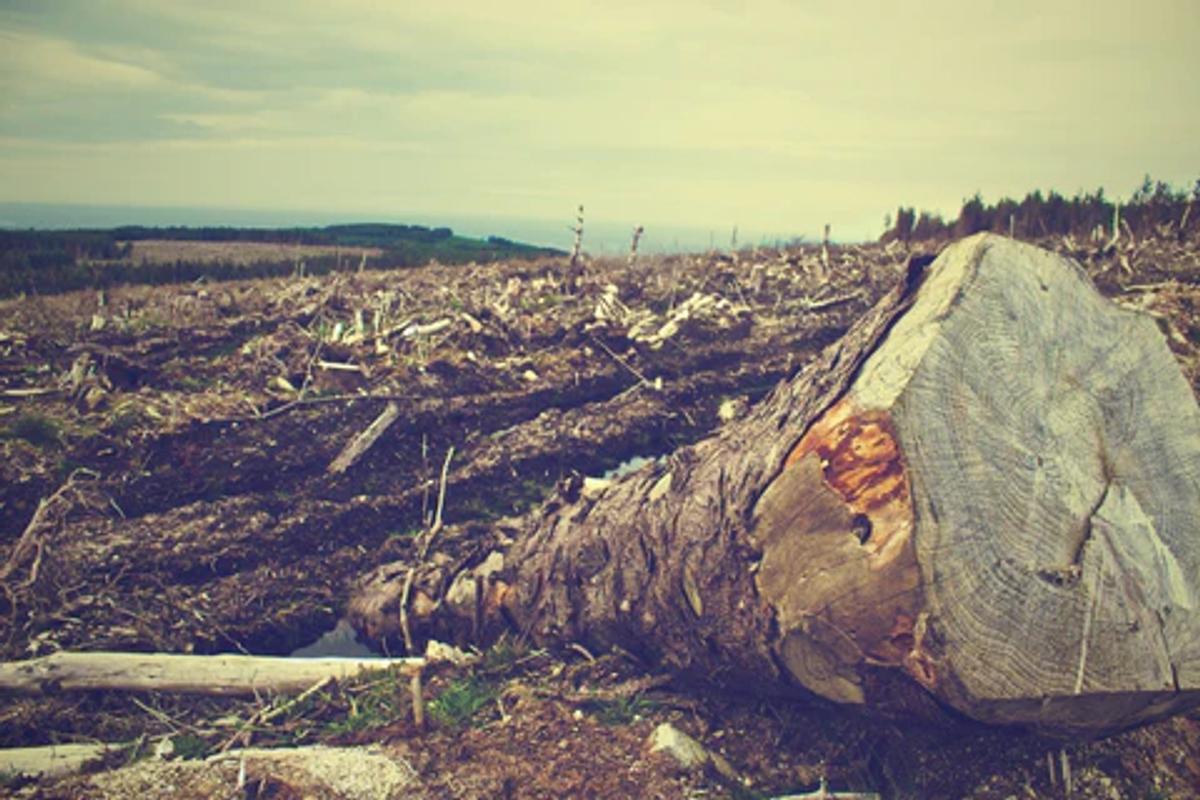
There has been an ongoing and incredible loss of animal life worldwide over the past 150 years. This is a tragedy that has affected almost every major group of organisms, including the many native bees, butterflies, birds, and other beneficial creatures that allow our natural world to function. A leading driver of this crash is land mismanagement: as humans, we've spent decades removing the kinds of plants our local wildlife and ecosystems need, and replacing them with non native plants that do very little or occasionally even nothing to support our environment in any meaningful way. In the worst cases, these non native plants may show themselves to be invasive species - escaping management and badly damaging local ecosystems.
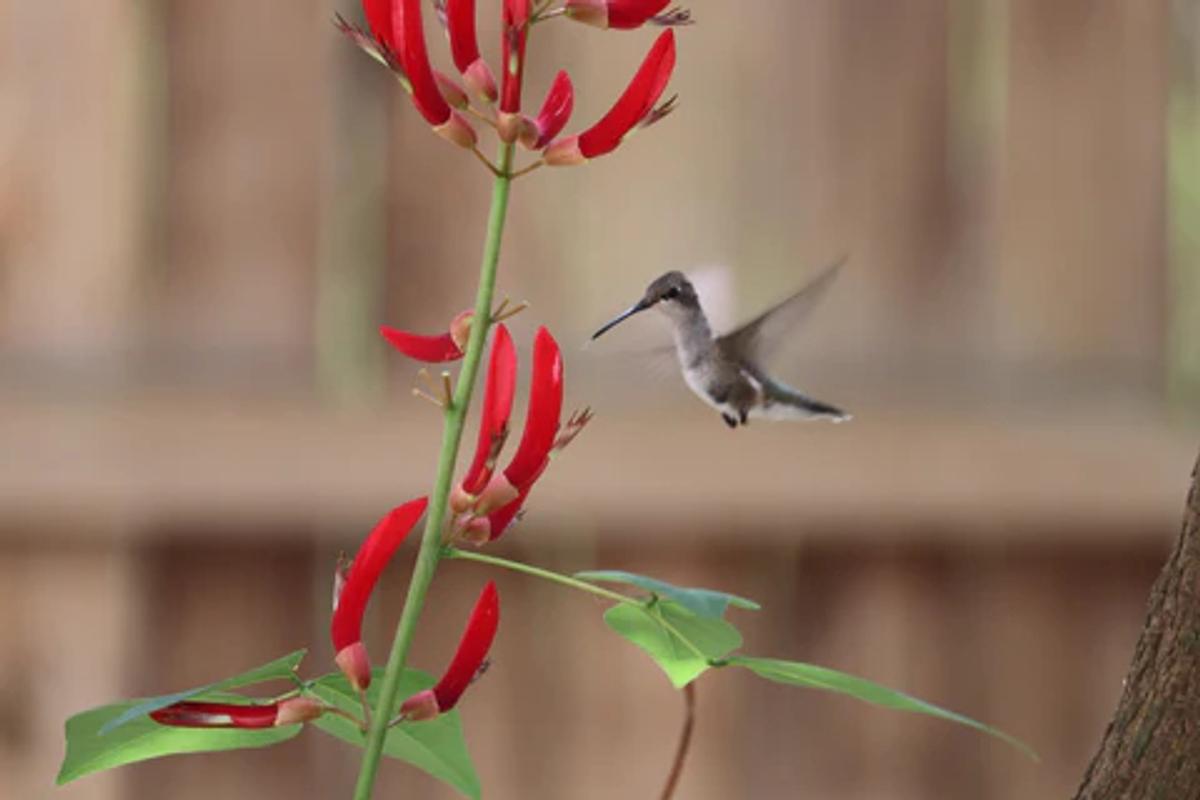
By contrast, native plants are adapted to all weather conditions and provide food and shelter for many bees, butterflies, birds, and other pollinators. With deep root systems on average, these species also sequester more carbon, cycle more nutrients into the soil, and provide more erosion control than turf grass and other ornamentals. Many species of native plants can survive in poor soils and are drought tolerant and deer resistant once established. Simply by adding a native garden bed or including some natives in your other landscapes you can directly help to reduce atmospheric CO2, create fertile soil, and reestablish a thriving environment. Read on below to see our starter list of perennial native plants for landscaping in Minnesota.
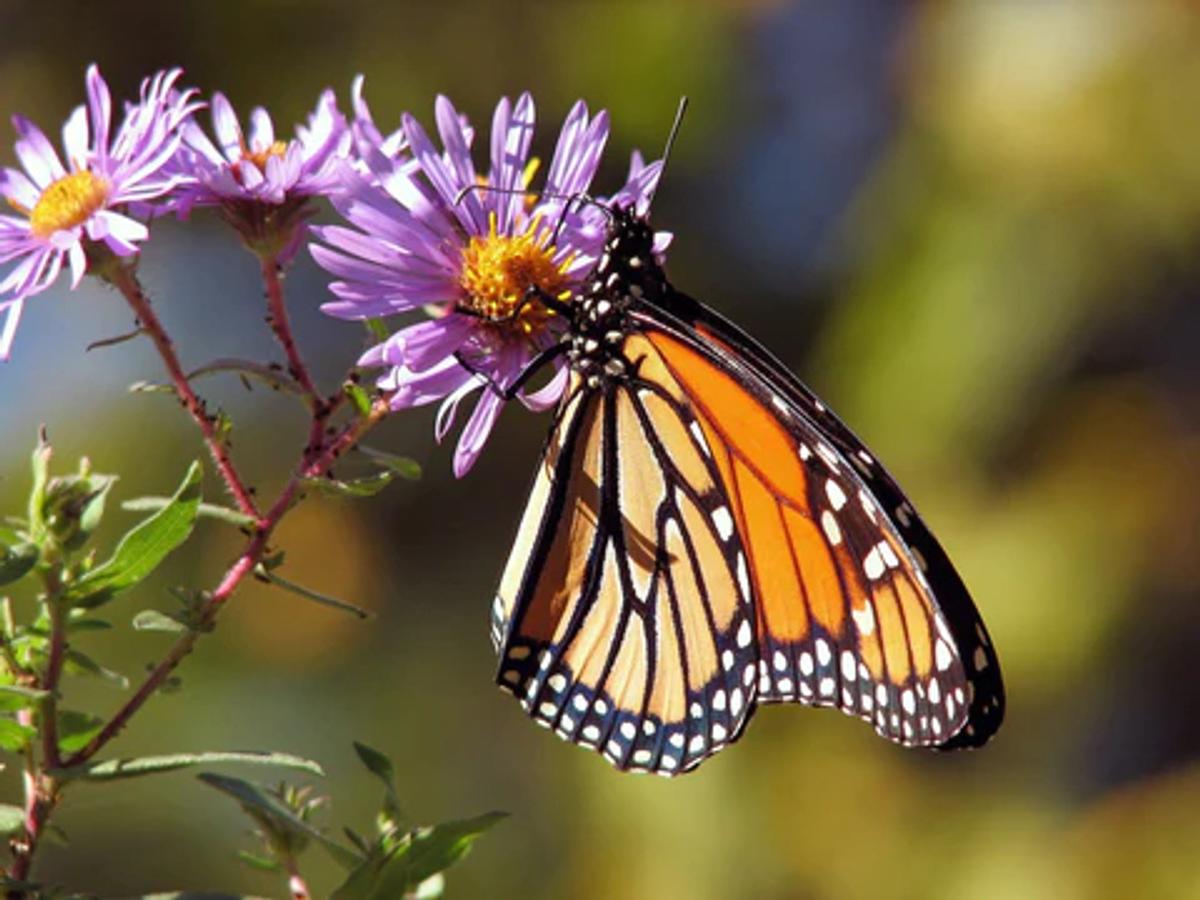
Native Plants of Minnesota
Here is just a handful of Minnesota native plants which I've split up into three major categories of sun exposure for convenience. Most of these perennial plants are historically found within the prairie biome, for which Minnesota is well-appreciated. Any one of these species would be a great choice for your landscape, as they will bring beauty, be well-adapted to your local climate, and support many native pollinators and other insects; and most can be found in My Home Park's pre-designed gardens for Minnesota.
Native Plants for Full Sun
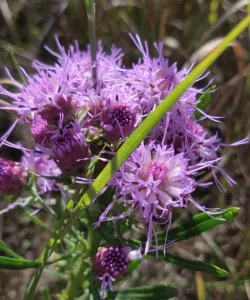
Rough Blazing Star is a striking prairie perennial with a highly unique appearance. Its unbranched stems are on the taller side, and can reach up to five feet in height. These are quite showy, as they bloom from top to bottom with clusters of deep pink-purple flowers in a distinctive bottle-brush shape.
Rough Blazing Star is also an important ecological player, as it attracts a wide variety of pollinators, including bees, butterflies, and hummingbirds. In fact, its unique bottle-brush flowers are perfectly designed to provide easy access to nectar for these important insects and birds.
Rough Blazing Star is adapted to thrive in full sun and a variety of soil types and moisture levels, making it a versatile choice for gardeners in a range of climates and environments. It is also a long-lived perennial that can provide beauty and ecological benefits for many years. So whether you're a nature enthusiast or someone who simply appreciates a unique and beautiful plant, Rough Blazing Star is a must-have addition to any full sun landscaping project.
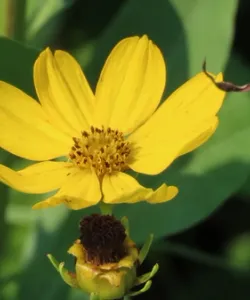
Stiff Coreopsis is another highly adaptable native plant. Its golden-yellow flowers, which bloom from mid-summer to early fall, are a striking addition to any prairie area, and are a favorite of pollinators. It can thrive in a variety of soil conditions, from dry and rocky soil to moist and loamy, and is well-suited to full sun locations. This makes it a great choice for gardeners who are looking for a low-maintenance plant that can provide long-lasting color throughout the growing season.
So whether you're looking to add some bright and beautiful blooms to your garden or want to attract pollinators and support local wildlife, Stiff Coreopsis is a wonderful choice. Its adaptability, long blooming season, and ecological benefits make it a plant that is sure to be appreciated by both humans and wildlife alike.
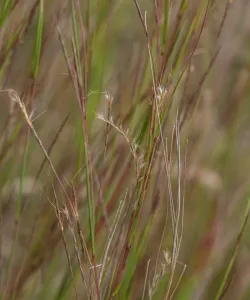
Little Bluestem is a gorgeous grass that is commonly found across the prairie and in meadows throughout North America. It is a warm-season grass that typically grows in clumps and can reach heights of 2 to 4 feet. Little Bluestem has narrow, bluish-green leaves that turn reddish-brown in the fall, adding a beautiful splash of color to the landscape. It produces attractive, fluffy seed heads in late summer that persist into the winter, providing food for birds and other wildlife.
This grass is a great addition to any garden or landscape, as it is low-maintenance and drought tolerant. It also has the added benefit of being an important host plant for the caterpillars of several butterfly species, including the rare Poweshiek skipperling (Oarisma poweshiek).
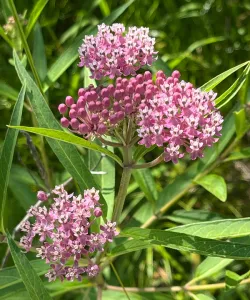
Swamp Milkweed, also called Red Milkweed, is native to all of the eastern United States and west up into the Rockies. As its name suggests, this awesome herbaceous perennial plant prefers being in moist to wet areas, such as near swales or ponds, where it will happily put forth rich, showy pink flowers at the ends of its sturdy stalks.
A boon for many insects, this perennial summer bloomer is a particularly important as a host plant for the endangered Monarch Butterfly (Danaus plexippus) - which lay their eggs exclusively on plants in the Milkweed family (genus Asclepias).
Native Plants for Part Shade
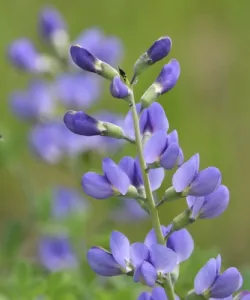
Blue False Indigo is a beautiful, native perennial plant that is commonly found in meadows, prairies, and open woods throughout eastern North America. It is a member of the pea family, and like other members of this family, it has unique flowers that are arranged in long spikes. It is a low-maintenance plant that is drought tolerant and adapts well to a wide range of soil types. It is also deer resistant, making it a great choice for gardeners who live in areas with high deer populations.
The flowers of Blue False Indigo are a beautiful, deep blue color and bloom in late spring to early summer, attracting pollinators. It is also an important host plant for several species of butterflies, including the Wild Indigo Duskywing (Erynnis baptisiae). The foliage is a beautiful blue-green color and is almost clover-like in appearance, adding interest even without flowers.
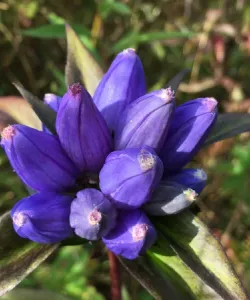
Bottle Gentian is a beautiful herbaceous perennial plant that typically grows in moist to wet prairie soils and woodlands. This plant is named for its unique, bell-shaped flowers that remain tightly closed, giving them the appearance of a bottle. The flowers are a deep blue-violet color, which makes them stand out in the landscape. The leaves are dark green and lance-shaped, with a smooth margin. Bottle Gentian blooms from late summer to early fall. Because the flowers are tightly closed, only bumblebees with long tongues are able to access the nectar within.
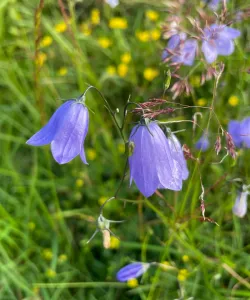
Harebell is a delicate and charming native wildflower with slender, arching stems that bear lovely, bell-shaped flowers. The flowers, which bloom in mid to later summer, range in color from pale blue to lavender-blue, and have delicate, thin petals with a distinctive flared shape. Harebell grows to just 6 to 12 inches tall, with small, narrow, grass-like leaves.
Harebell is often found growing in rocky or gravelly soils in open meadows, prairies, and mountain regions, and is another pollinator favorite. This hardy plant is also adaptable to a variety of growing conditions, and is a great choice for gardeners looking to add a touch of wild beauty to their landscape.
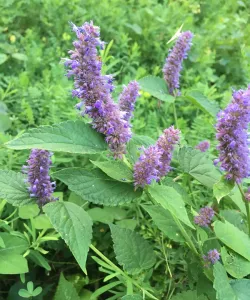
Lavender Hyssop is a beautiful, aromatic prairie and open woodland perennial found throughout much of North America. Its slender stems can grow up to 3 feet tall and are adorned with spikes of tubular, lavender-pink flowers from midsummer to early fall. As a member of the mint family, its foliage is also quite attractive, with lance-shaped leaves that have a pleasant fragrance and can be used to make herbal teas or to add flavor to salads and other dishes. Leave the flower heads after they've bloomed, as chickadees and other small backyard birds will feast on the seeds.
Lavender Hyssop is a relatively low-maintenance plant that is easy to grow in full sun to partial shade and well-draining soil. It is also quite drought-tolerant once established, making it a great choice for gardens with dry, sandy soil. Overall, Lavender Hyssop is an excellent choice for gardeners looking to add a beautiful, beneficial, and versatile perennial to their landscape.
Native Plants for Full Shade

Zigzag Goldenrod is a slender Minnesota native plant with a zigzagging stem that can grow up to three feet in height; often found in the shaded areas of woodlands and forests. The leaves are bright green, alternate, and slightly serrated, while the flowers are yellow and arranged in a loose, branching cluster at the top of the stem. Zigzag Goldenrod blooms from August into October, providing a valuable source of nectar for pollinators during a time when fewer nectar-rich flowers are available. It is a low-maintenance plant that is well-suited for naturalizing in woodland landscapes and other shaded areas.

Virginia Bluebells are a stunning native plant that produces clusters of drooping, trumpet-shaped flowers in shades of pink and blue. The flowers emerge in early spring and are accompanied by attractive green foliage that turns yellow as the plant goes dormant in the summer. Virginia Bluebells grow to be about 1-2 feet tall and prefer moist, well-drained soils in partial to full shade. Their nectar-rich flowers make them a favorite of bees, butterflies, and hummingbirds, while their leaves provide food for early-season caterpillars.
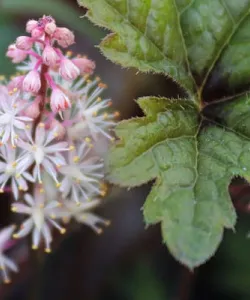
Foamflower is an easy-to-grow and delightful North American woodland plant with many ornamental qualities. The plant produces low-growing heart-shaped foliage with serrated edges, and sends up slender flower stems that are adorned with tiny white or pink blossoms in the spring. The blossoms are clustered together in plumes, creating a frothy, foam-like effect that gives this plant its common name.
Foamflower is a shade-loving plant that prefers rich, moist soil, making it an excellent choice for any woodland garden or shady border. Its foliage stays attractive throughout the growing season, and the delicate flowers are a pollinator favorite. Foamflower is also a popular choice for use in container gardens or as a groundcover in shaded areas.
Maidenhair Fern
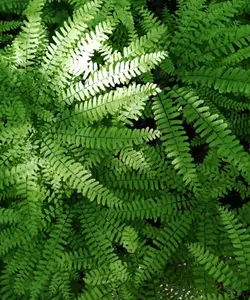
Maidenhair Fern is a delicate and graceful fern that is highly prized for its unique and elegant appearance. Its fronds are light green and fan-shaped, with numerous small leaflets arranged in a distinctive and intricate pattern. The fronds arise from a central point, giving the plant a distinctive vase-like shape. Maidenhair Fern prefers cool, moist, shaded environments and can be found growing in wooded areas, near streams and waterfalls, and in rock crevices. While not a pollinator favorite, Maidenhair Fern remains a popular choice for adding ground-level texture and interest to shaded areas.
What You Can Do Today

If you live in Minnesota, My Home Park has a large collection of pre-designed gardens that bring together diverse sets of Minnesota natives produced by expert, organic growers in the Great Lakes region. These gardens are designed to bloom from early spring to early fall, beautifying your landscape while supporting your environment. Check out details in our catalog for Minnesota or explore our offerings for other states in the Great Lakes region to get started today!
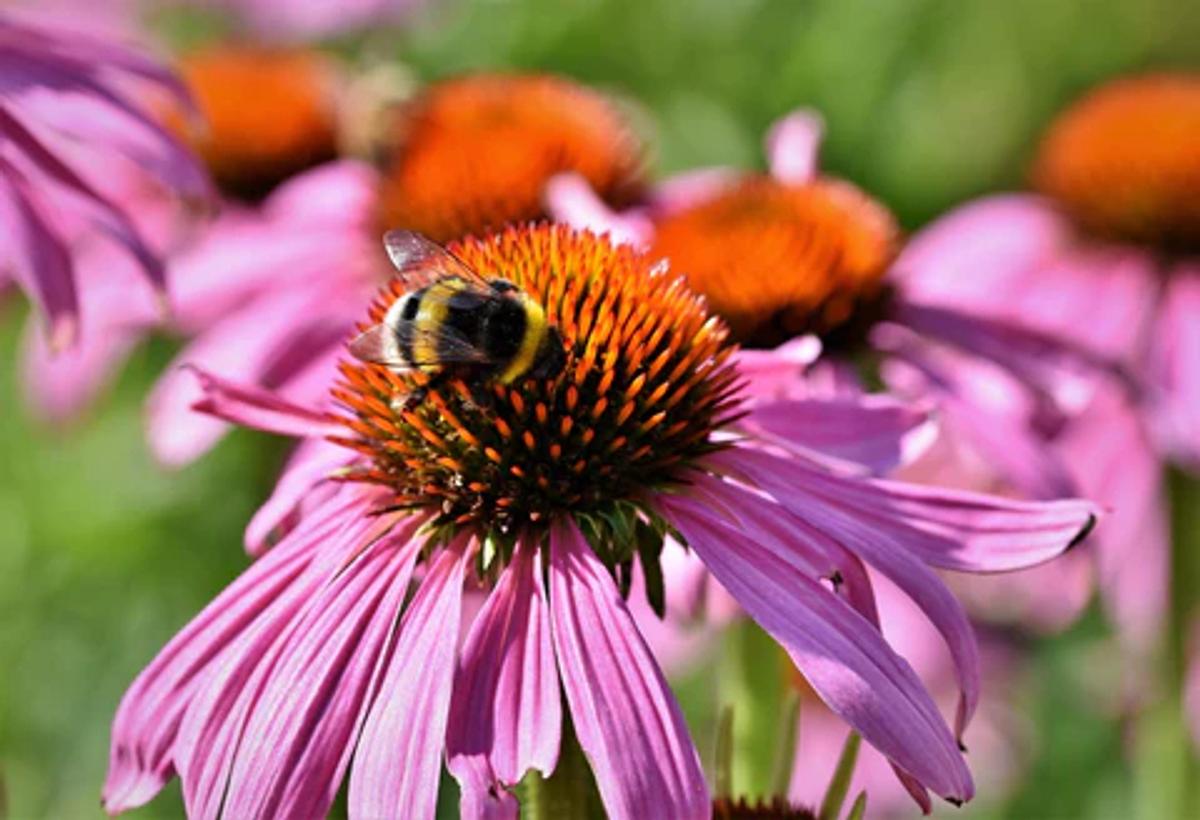
Share this article


